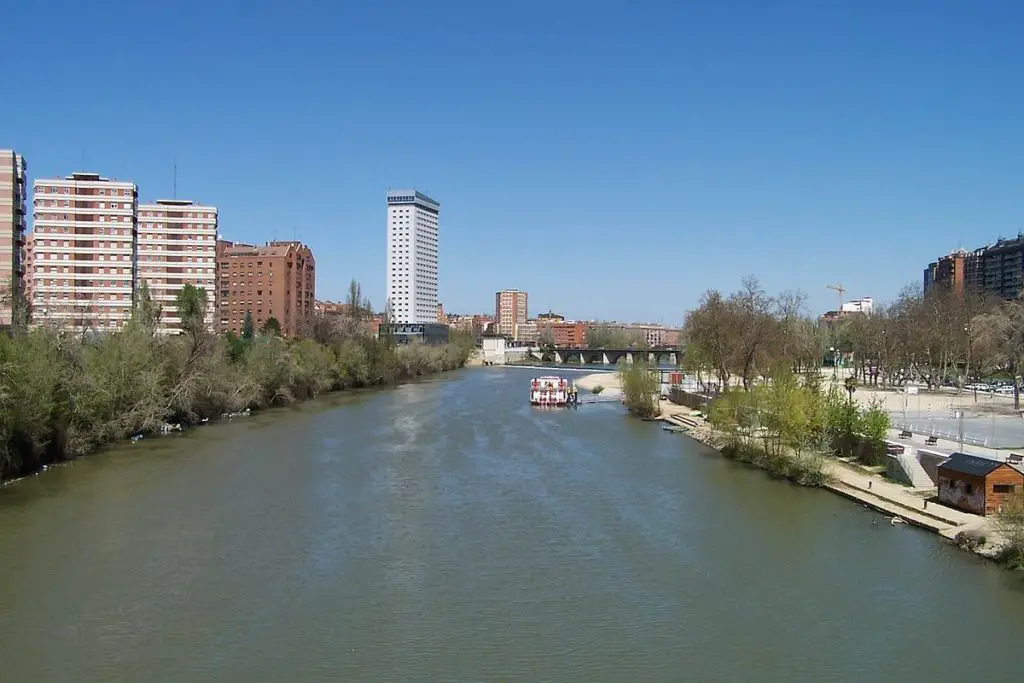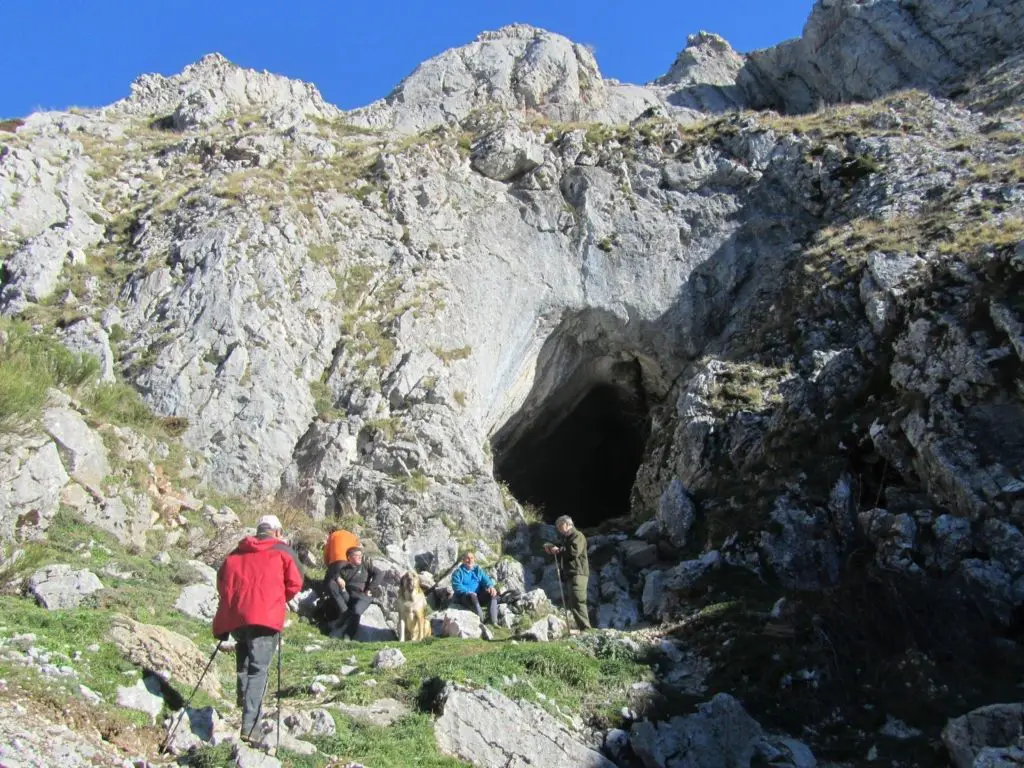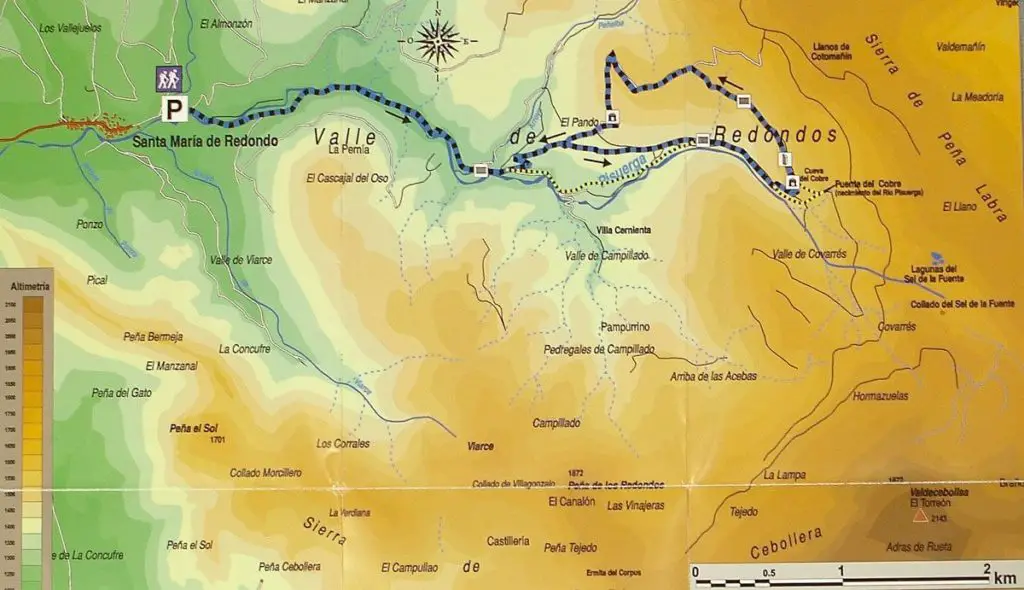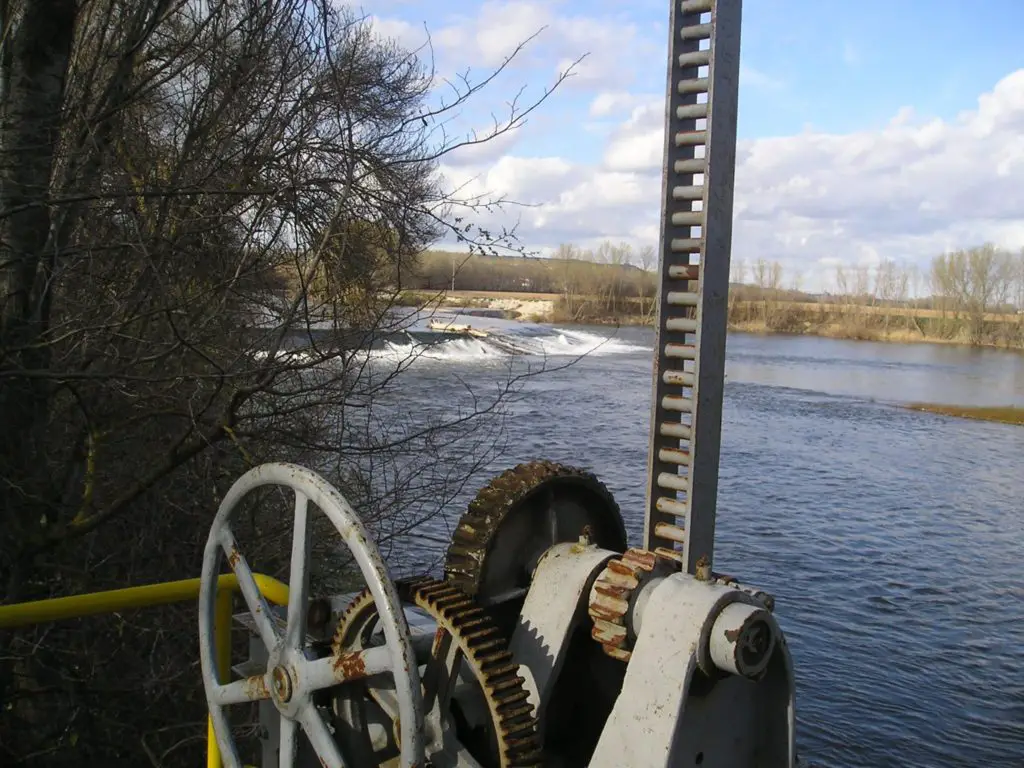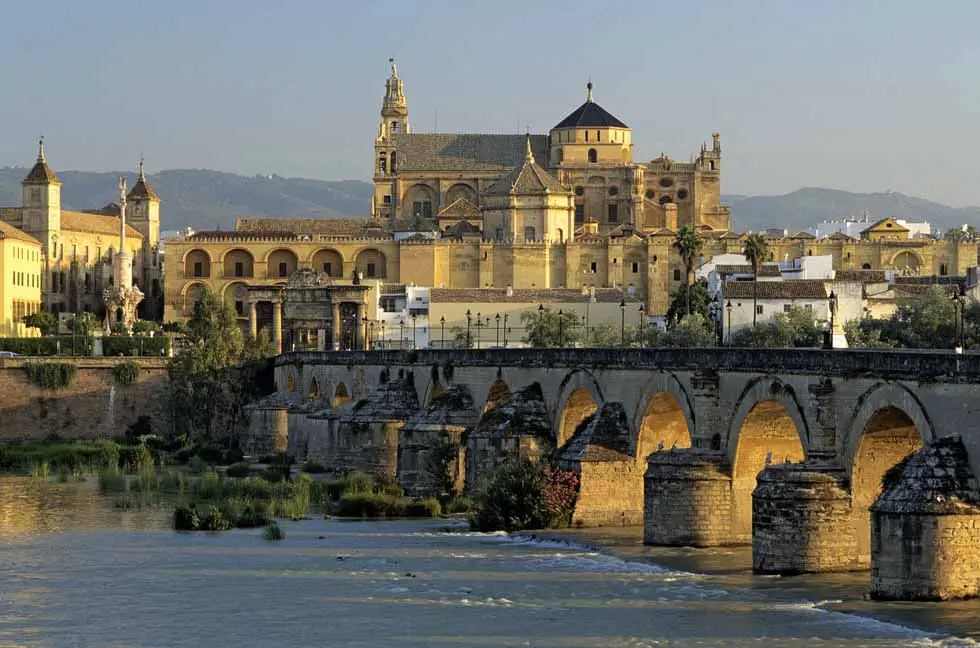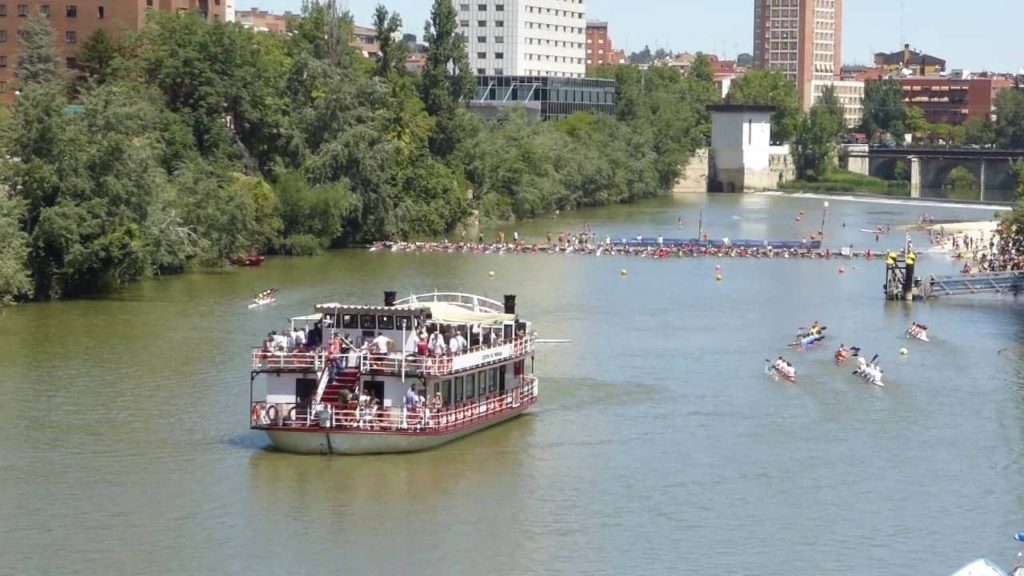The River Pisuerga is located in Spain and takes its name from an ancient Roman settlement located in what is now Herrera de Pisuerga, in the province of Palencia, a place where the legions camped when they went to fight the Cantabrian peoples.
Indice De Contenido
The sources of the river Pisuerga
The River Pisuerga rises in the province of Palencia and flows into the province of Valladolid, where it is currently the most important river (see other rivers in Spain such as the Guadalquivir).
It is said to originate in the Cobre basin, a depression on the southern slopes of the Sierra de Peña Labra, at an altitude of 1600 metres.
But its real source is the Covarrés glacier, between the peak of Valdecebollas and the Sierra de Hijar, in what is usually called the Sel de la Fuente, near Brañosera, at 2143 metres, but there it goes underground until it emerges about a kilometre later in the Cueva or Fuente del Cobre.
The main tributaries of the Pisuerga are: the Resoba, the Rivera, the Camesa, the Ritobas, the Monegro, the Sauguillo, the Burejo, the Fresno, the Valdavia, the Carrión, the Arlanza, the Esqueva and the Odra.
Map of the river Pisuerga
The course of the river Pisuerga
The course of the river Pisuerga (see also river Ebro) follows a north-south route for almost its entire length, until its last stretch turns west and much of its course forms the border between the provinces of Palencia and Burgos.
It passes through several towns in the province of Palencia, such as Santa María de Redondo, Cervera de Pisuerga, Aguilar de Campoo, Becerril del Carpio, Alar del Rey, Herrera de Pisuerga, Ventosa de Pisuerga, Olmos de Pisuerga, Naveros de Pisuerga, Osorno la Mayor, Lantadilla, Melgar de Yuso, Villodre, Astudillo, Villalaco, Cordovilla la Real, Torquemada, Magaz de Pisuerga, Venta de Baños, Tariego de Cerrato and Dueñas.
When it crosses Burgos, it passes through Zarzosa del río Pisuerga, Castrillo de Riopisuerga, San Llorente de la Vega and Melgar de Fernamental. In the province of Valladolid it passes through Valoria la Buena, Cabezón de Pisuerga, Santovenia de Pisuerga, Valladolid, Arrollo de la Encomienda, Simancas and Geria.
The River Pisuerga is 283 kilometres long and flows into the right bank of the River Dueros in the municipality of Tordesillas, in the province of Valladolid.
At the confluence of the two rivers, the flow of the Pisuerga exceeds that of the Dueros, which is why they are considered to be confluences rather than tributaries. And this is the origin of a local proverb that says The Duero carries the glory, but the Pisuerga gives it the water.
The Pisuerga is also famous for the great floods it has caused in the surrounding towns. Among the most severe are those of February 1636, December 1739, February 1788, February 1855 and, in the 20th and 21st centuries, those of 1914, 1924, 1936, 1947, 1962 and the last one in 2001.
The walk along the river Pisuerga is a famous and traditional one, especially when it crosses Valladolid, where it is the main river. The bridges that have been built over time have unique stories to tell, which will enchant tourists and allow them to learn a little more about the stories left behind by the settlers from generation to generation.
Among the most important bridges is the Puente Mayor, the name by which the river Pisuegra was known in the past. You can also see the Poniente Bridge, built in 1954, the Isabel la Católica Bridge, built in 1956, and the García Morato Bridge, built in 1961, as well as the Hanging Bridge, built in 1865, which is a symbol of modernity, since it demonstrated the use of iron as a new and challenging construction material.
The Medieval Bridge, with its 17 arches, is a monument of interest. It has been of great importance for land communication since ancient times, being located on the old Roman road between Emerita and Caesaraugusta, and today it is part of the route of the Camino de Santiago de Madrid (see also Alberche River).
The Battle of Simanacas took place on the waters of the Pisuerga in 939, and in 1812, during the Spanish War of Independence, several spans of the bridge were blown up.
A picturesque attraction on the river Pisuerga is “La Leyenda del Pisuerga”, a 25 metre long and 6 metre high boat with a capacity of around 130 people, reminiscent of the boats on the Mississippi, which runs along the river from Playa de las Moreras in Valladolid, crossing the city, for a little over 12 kilometres.

